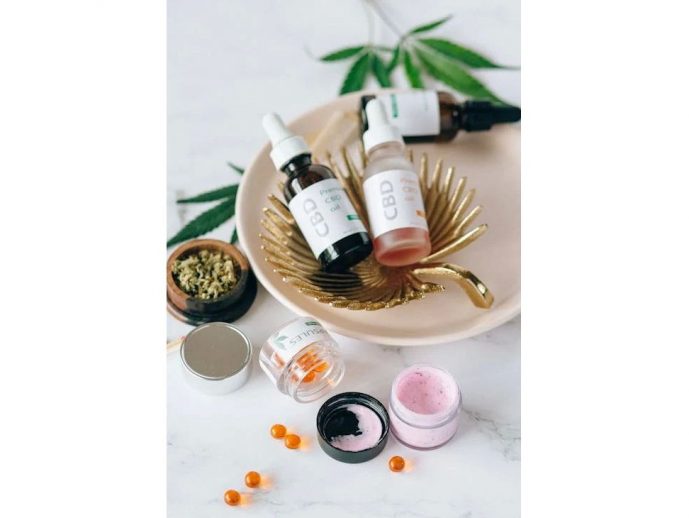Categories more
- Adventures (16)
- Arts / Collectables (15)
- Automotive (37)
- Aviation (11)
- Bath, Body, & Health (76)
- Children (6)
- Cigars / Spirits (30)
- Cuisine (16)
- Design/Architecture (21)
- Electronics (12)
- Entertainment (4)
- Event Planning (5)
- Fashion (44)
- Finance (9)
- Gifts / Misc (6)
- Home Decor (44)
- Jewelry (40)
- Pets (3)
- Philanthropy (1)
- Real Estate (14)
- Services (22)
- Sports / Golf (14)
- Vacation / Travel (60)
- Watches / Pens (14)
- Wines / Vines (24)
- Yachting / Boating (15)
Exploring The Massive Rise of Luxury Cannabis Businesses – Full In-Depth Guide
Published
05/11/2025Cannabis used to carry a whisper of rebellion, often tucked into back alleys and rolled in mystery. But now? It’s on display under glass domes, sold in sleek boutiques, and infused into skincare, wine, and fashion. The plant once synonymous with counterculture has gone couture. Luxury cannabis isn’t a trend—it’s a transformation. This in-depth guide unpacks how cannabis became a premium product, who’s driving this shift, and what it means for the future of weed as a lifestyle symbol, not just a substance.
How Cannabis Evolved From Taboo to Luxury Good
What changed? Culture, law, and branding converged to lift cannabis out of the shadows and into the spotlight. The rise of luxury weed isn't just about higher prices—it’s about perception, presentation, and experience. This movement mirrors how coffee, wine, and even chocolate evolved from commodity to craft.
Legalization Sparked Sophistication
- With legalization in dozens of U.S. states and countries like Canada, cannabis gained legitimacy—and competition.
- Regulated markets allowed premium brands to enter with consistency, safety, and transparency.
- This opened the door for upscale packaging, retail design, and storytelling.
High-Income Consumers Changed the Market
- Wealthy millennials and Gen Z consumers now openly embrace cannabis—but demand style, safety, and substance.
- They want premium sourcing, boutique genetics, and curated effects.
- Think less “stoner vibes” and more “elevated wellness”—a $50 pre-roll in a gold tin isn’t unusual anymore.
Design and Branding Did the Heavy Lifting
- Luxury brands use minimalist aesthetics, high-end typography, and storytelling that mirrors fine wine or cosmetics.
- Companies like Beboe, 1906, and House of Puff focus on art, mood, and refinement.
- This branding shift makes cannabis palatable to upscale consumers and destigmatizes use in social and professional spaces.
Who’s Leading the Luxury Cannabis Movement?
Not every grower is planting for volume. Some are cultivating for taste, aesthetics, and experience. From celebrity-backed brands to legacy growers turned boutique artisans, the new cannabis elite are redefining what it means to get high—with intention, elegance, and even ceremony.
Celebrity Brands Redefine Visibility
- Jay-Z’s Monogram, Seth Rogen’s Houseplant, and Bella Thorne’s Forbidden Flowers aren’t gimmicks—they’re style-first, lifestyle-driven brands.
- These companies blend cultural influence with premium sourcing and curated product design.
- Celebrities bring trust, but they also challenge old stereotypes by positioning cannabis as chic.
Craft Growers Are the New Sommeliers
- Just as craft beer and boutique wineries rose to fame, small-batch cannabis farms are now celebrated.
- These growers focus on terpene profiles, phenotype selection, and sustainable cultivation.
- Brands like Alien Labs, Sherbinskis, and Sonoma Hills Farm offer strain experiences—not just bags of weed.
Wellness-Focused Companies Tap Into the Spa Market
- Luxury cannabis intersects with wellness in the form of infused bath bombs, facial oils, and microdosed edibles.
- Brands like Lord Jones and Kikoko market to health-conscious, stress-weary consumers who view cannabis as a lifestyle enhancer.
- Products are packaged like skincare: clean, classy, and therapeutic.
What Luxury Cannabis Means for the Future of the Industry
The luxury boom isn’t just a price hike—it’s a strategic rebranding of cannabis culture. This shift will reshape everything from tourism to retail design, while also raising questions about accessibility and equity. Luxury weed changes who gets to consume, where, and how—and it sets a new bar for what consumers expect.
Retail Spaces Are Turning Into Boutiques and Galleries
- Gone are the bulletproof glass counters and neon green lights.
- Upscale dispensaries now resemble art galleries, perfumeries, or Apple Stores.
- Experience-driven design (think music, aroma, and mood lighting) elevates cannabis shopping to a lifestyle ritual.
Cannabis Tourism and Hospitality Are Going High-End
- Luxury cannabis resorts, lounges, and culinary experiences are booming in legal markets.
- You can now pair a five-course CBD-infused meal with a scenic smoke session in Napa Valley.
- This creates a new form of cultural capital: being “cannabis-savvy” is becoming part of a refined lifestyle.
Challenges: Gentrification, Gatekeeping, and Accessibility
- As cannabis goes luxury, it risks leaving behind the communities that built the industry.
- High prices and exclusive branding may make wellness cannabis inaccessible for those who need it most.
- The industry must balance sophistication with social equity—or risk repeating history’s mistakes.
Conclusion: Cannabis Is No Longer Counterculture—It’s Couture
The rise of luxury cannabis is more than just expensive products—it’s a cultural reimagining of what cannabis means. What was once stigmatized is now celebrated in the pages of Vogue and stocked on designer shelves. Sophistication, personalization, and aesthetics now define the modern cannabis experience. But behind the polish lies a challenge: to build an industry that’s both beautiful and fair. As cannabis becomes a luxury lifestyle, the question becomes not if it will evolve—but how we ensure everyone evolves with it. Finally, if you want to start your own cannabis growth business, and looking for the best grow tents, check out the following article!















